Hungarian motorcycles
In Budapest, Hungary, in the Nagykőrősi Ut (Road to Nagykőrősi), behind an old garage is a shed with a nice collection of motorcycles made in Hungary.
The owner,
József Maróti, inherited the motorcycle blood from his father, a well respected motorcycle engineer, and together with his friend Zoltán Ocskay he started in the 50-ies to restore motorcycles. In the meantime the collection has grown to a leading collection of Hungarian motorcycles that can be visited on request.
At the 2014 congress of the
F.I.V.A. (Fédération Internationale des Véhicules Anciens), organized by the MAVAMSZ, the Federation of Hungarian Historic Vehicle Clubs, the collection joined the galery of most important motorcycle museums.
Reason for the Hungarian Post to pay attention to the Hungarian motorcycle industry. On the stamps we see images of the most famous Hungarian brands, from the shed of Maroti.
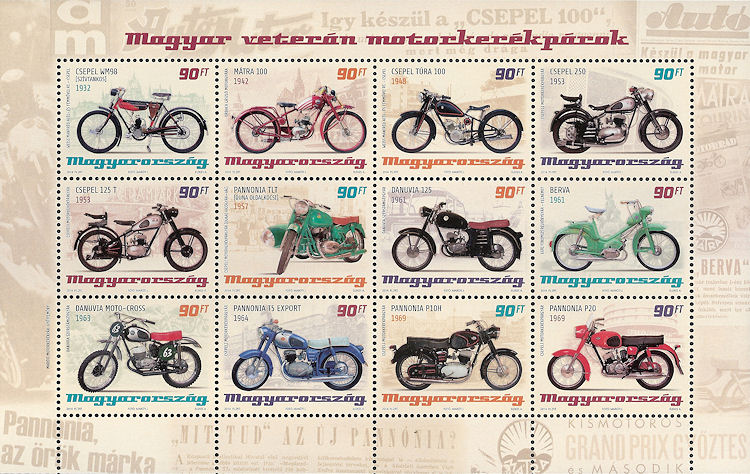
On the stamps from left to right, in order of the year of construction, the following motorcycles and the background compositions:
- (1932) Csepel WM98 with the present-day view of the Hungarian Parliament Buildings
- (1942) Mátra 100 with the fishermen bastion and the King Mathias church
- (1948) Csepel Túra 100 with the station of the Széchenyi Cog Railway in Budapest
- (1953) Csepel 250 and the People's Party stadium in Budapest
- (1953) Csepel 125 T in front of the Budapest amusement park
- (1957) Pannonia TLT with Duna sidecar in the street of the revolution in 1956
- (1961) Danuvia 125, built in Zugló, a district of Budapest, with an Ikarusz omnibus at Heroes' Square
- (1961) Berva, built close to Eger, with a square in Eger
- (1963) the sporty Danuvia Moto-Cross in a present-day racing environment
- (1964) Pannonia T5 export with the Hotel Gellért in the year of opening
- (1969) Pannonia P10H with Buda Castle and the Chain Bridge
- (1969) Pannonia P20 in front of the round Hotel Budapest.
The sheet is printed in embossed print, the same method we already know from the issue of Macau in 2003, and has various images of newspaper fragments about motorcycle sports on the sheet margin.
On the FDC-issue, existing of 2 enveloppes, we find the image of the Czonka 3-wheeler that has been used before:
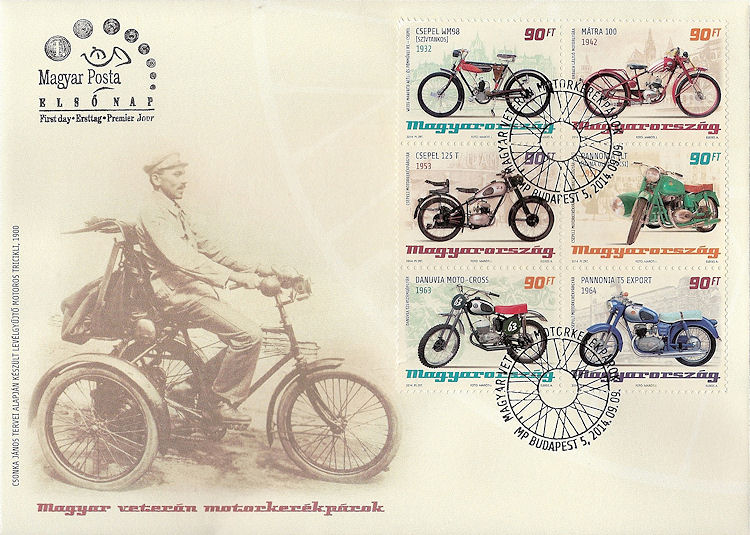
FDC with the left halve of the block
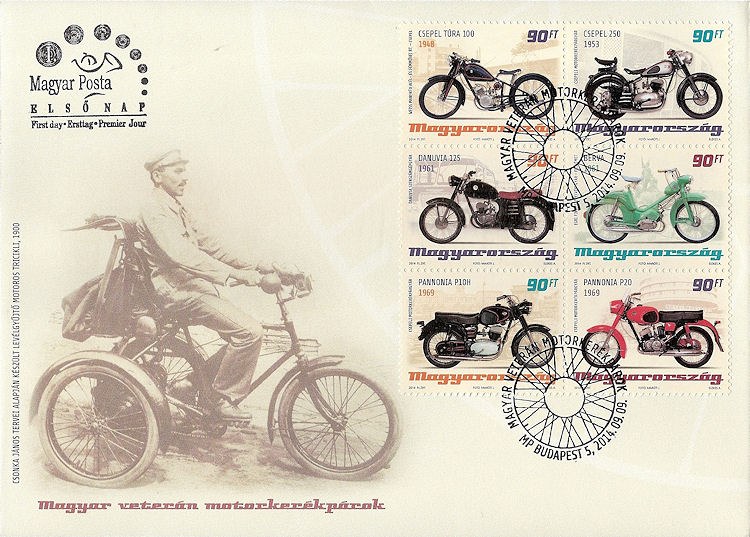
FDC with the right halve of the block
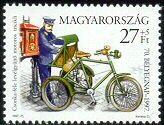
The stamp from Hungary from 1997
With this 3-wheeler the Hungarian Post was the first postal service in the world that was using motorized transport to collect post from mailboxes.
The images on the stamps are also used for a 2015 calendar, of which a postcard can be made every month with a bit of tearing.
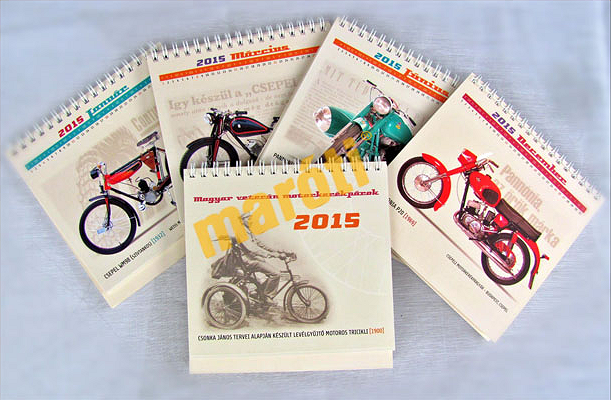

Front of the calender with the Czonka 3-wheeler
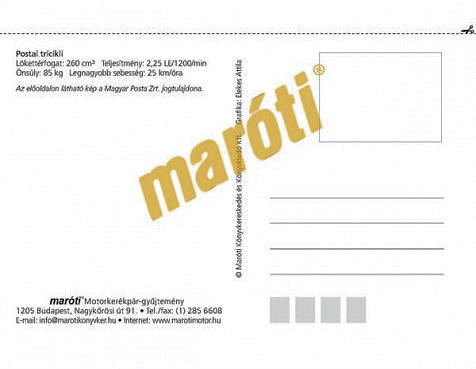
Backside of the calender front, can be used as postcard
With the closure of the Csepel factory in 1975 the Hungarian motorcycle industry came to an end.
Hans de Kloet
Top - Back to former page - Home |